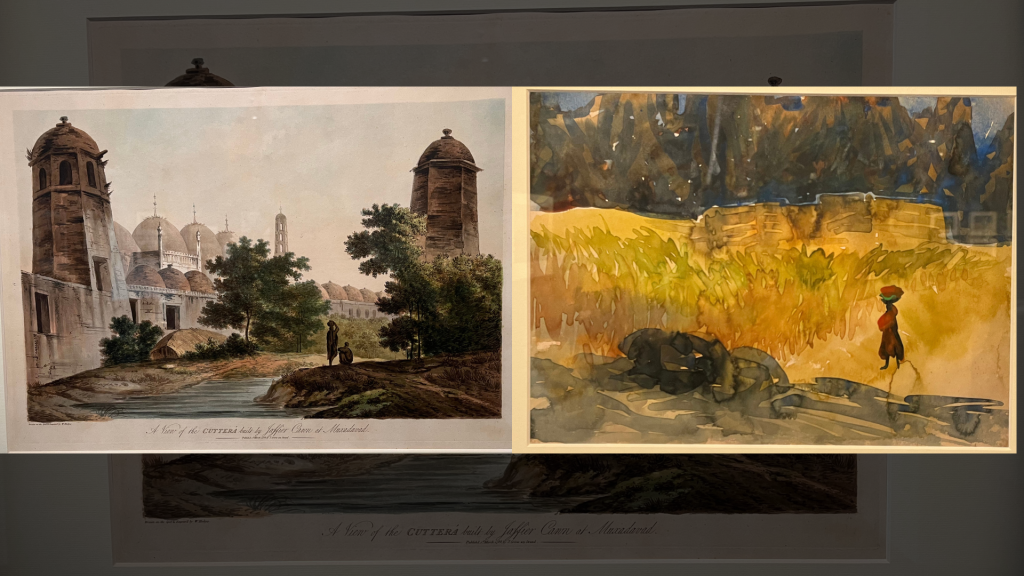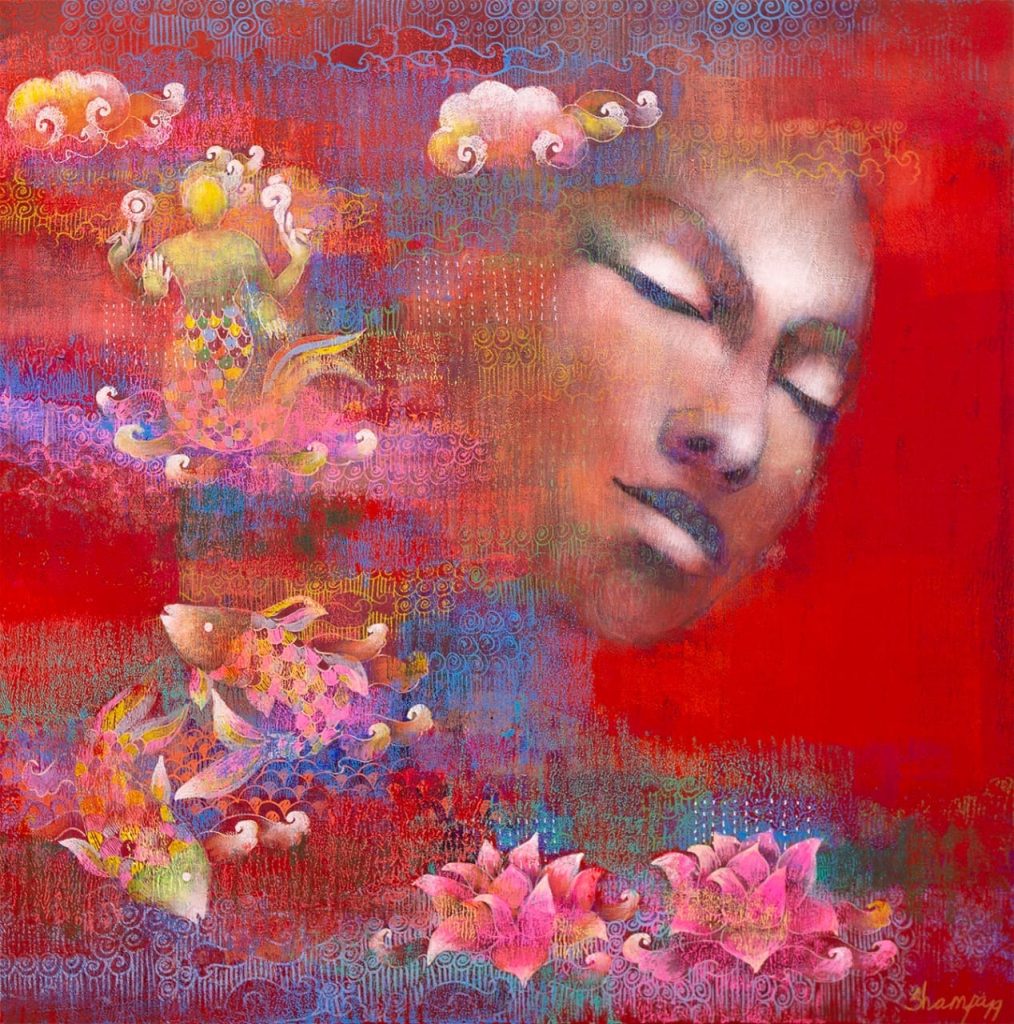![]()
![]()
![]() The DAG Gallery, tucked away in the centre of Windsor Place, is a tribute to the diverse range of artistic tales that have influenced the development of India’s cultural legacy. This season, the gallery presents a thrilling double feature that unites two distinguished artists from disparate historical periods, each of whom made a unique contribution to the wide canvases of Indian art. The exhibition, “William Hodges and the Prospects of India,” takes visitors on a historical journey via the artistic records of the English painter from the 18th century who, in the course of his exploratory expeditions, captured the fascination and mysticism of the Indian subcontinent. Simultaneously, “Flower of Fire: The Life and Art of Gopal Ghosh” unfolds a more contemporary narrative, delving into the profound impact of a modernist maestro who bridged tradition and innovation, illuminating the canvas with his deeply rooted expressions.
The DAG Gallery, tucked away in the centre of Windsor Place, is a tribute to the diverse range of artistic tales that have influenced the development of India’s cultural legacy. This season, the gallery presents a thrilling double feature that unites two distinguished artists from disparate historical periods, each of whom made a unique contribution to the wide canvases of Indian art. The exhibition, “William Hodges and the Prospects of India,” takes visitors on a historical journey via the artistic records of the English painter from the 18th century who, in the course of his exploratory expeditions, captured the fascination and mysticism of the Indian subcontinent. Simultaneously, “Flower of Fire: The Life and Art of Gopal Ghosh” unfolds a more contemporary narrative, delving into the profound impact of a modernist maestro who bridged tradition and innovation, illuminating the canvas with his deeply rooted expressions.
The juxtaposition of William Hodges and Gopal Ghosh at DAG Gallery creates a dialogue between two artistic epochs, exploring the diverse perspectives that have shaped the artistic portrayal of India. As visitors embark on this visual journey, they witness the evolution of artistic sensibilities, from Hodges’ 18th-century marvels, shaped by colonial encounters and European perspectives, to Gopal Ghosh’s mid-20th-century modernist masterpieces that emerged from a more intimate engagement with the cultural landscapes of India.
William Hodges and Gopal Ghose, though belonging to different periods and cultural contexts, each left an indelible mark on the artistic representation of the Indian landscape. Their works, separated by centuries, reflect not only the evolving artistic sensibilities but also the changing socio-cultural dynamics of the Indian subcontinent.
William Hodges, the 18th-century English painter, ventured to India as part of his broader explorations and artistic documentation during Captain James Cook’s second voyage to the Pacific. Hodges’ depictions of India are primarily seen in his “Select Views in India,” a collection of paintings that captures the landscapes, architecture, and people of the Indian subcontinent. His approach to the Indian landscape was marked by a sense of awe and curiosity, as he sought to portray the exoticism and diversity of the region.
Hodges’ paintings showcase a meticulous attention to detail, emphasising the vibrant colours, intricate architecture, and lush landscapes of India. His works often romanticised the scenery, portraying it through a lens shaped by European perceptions of the Orient. The Indian landscapes in Hodges’ art become a visual narrative of discovery, reflecting the encounter of the European gaze with the richness of Indian culture.
On the other hand, Gopal Ghose, an artist associated with the modernist movement in India during the mid-20th century, brought a distinct perspective to the representation of the Indian landscape. Ghose, a member of the Calcutta Group, aimed to break away from the conventional artistic traditions and explore new avenues of expression. His engagement with the Indian landscape was not merely an external observation but a more intimate exploration of his cultural roots.
Gopal Ghose’s artworks, particularly his depictions of Bengal landscapes, reveal a harmonious fusion of traditional themes with modernist influences. Unlike Hodges, Ghose was not an outsider looking in but an active participant in the socio-cultural milieu of India. His paintings often captured the everyday life of rural Bengal, portraying the simplicity of village existence, the vibrancy of festivals, and the connection between humanity and nature.
While Hodges’ perspective was characterised by the colonial gaze and a sense of exoticism, Gopal Ghose’s perception of the Indian landscape was grounded in a more indigenous and introspective approach. Ghose’s art was a bridge between tradition and modernity, reflecting the changing narrative of Indian identity in the post-colonial era.
William Hodges and Gopal Ghose’s creative renderings of the Indian landscape offer an intriguing contrast study. Hodges’ artwork provides an insight into the curious and somewhat exoticised colonial experience, but Ghose’s paintings show a more contemplative interaction with the Indian landscape that is based on the complexity of his cultural background. Collectively, these painters add to an intricate web of depictions that show how art, culture, and India’s many landscapes have changed over time.
Abanindranath Tagore: A Painter of Bharat Mata and Founder of Bengal School








